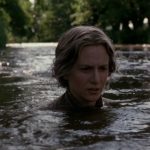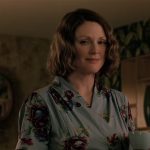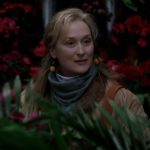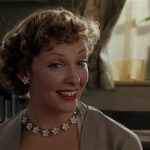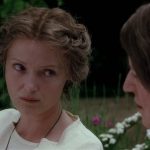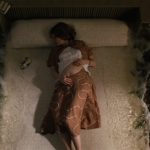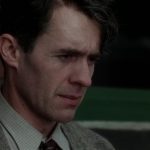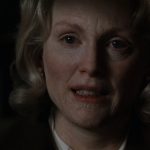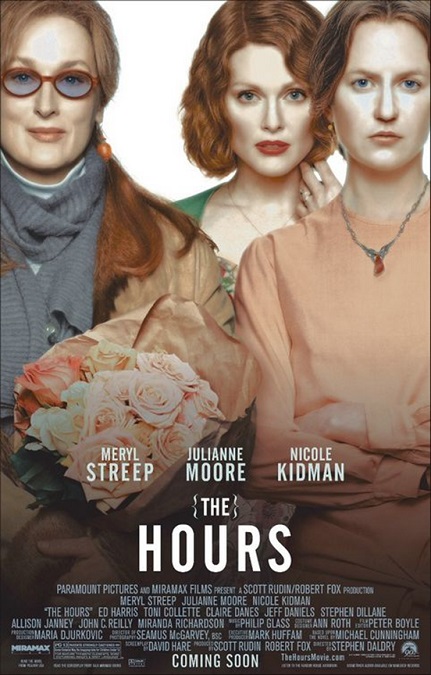
The Hours – 2002
This was a well-made movie. The drama was intense and deep. The musical score was superb. The casting and the acting was top-notch. There is no denying any of that. But the film was insufferable. It was slow as a sloth, way too self-important, and didn’t have an iota of humor to make the difficult drama any more palatable or meaningful. It was depressing and bleak, yet done to perfection.
The narrative seemed to be a work of art that only the overly-enlightened mind would claim to enjoy. I keep picturing a snooty art critic in a gallery, staring at a giant canvas in an ornate frame painted entirely white. As he stares at the avant-garde canvas, he remarks to his colleague, “Stunning, don’t you think? Absolutely brilliant. Its stark simplicity seems to encapsulate the emptiness of the universe while at the same time uniting humanity. The artist is clearly a genius.”
The movie told three stories at the same time, each taking place in a different time period, each following a very different woman. The first is set in 1941. Nicole Kidman plays the famous tragic author, Virginia Woolf. She struggles with her sanity as she writes her final novel, Mrs. Dalloway, even though in reality it wasn’t her final novel, having been written in 1925. The second takes place in 1951, and stars Julianne Moore, playing the part of Laura Brown. She is a suburban housewife in Los Angeles with the perfect husband, the perfect child, the perfect home, and who is becoming suicidal with the banality of it all. The third story, which takes place in 2001, follows Clarissa Vaughan, played by Meryl Streep. She is a book publisher who is trying to put on a party for her friend, Richard, played by Ed Harris, a poet with AIDS who has won a prestigious award.
The three stories are all linked with nearly invisible threads. The suicidal housewife is reading the book Mrs. Dalloway, which Virginia Woolf is writing, in which a woman named Clarissa Dalloway is throwing a party. Her son, Richard, is later revealed to be Clarissa’s friend as an adult. Clarissa, herself, seems to be the live embodiment of the character of Mrs. Dalloway. Richard even calls her Mrs. Dalloway as a term of endearment.
The act of suicide is also a common theme in each of the stories being told. In reality, Woolf committed suicide, Mrs. Brown nearly attempts suicide to escape a life she feels is killing her. And Richard, a man with abandonment issues gained when his mother had left him and his father and newborn sister, commits suicide in front of Clarissa by throwing himself out of a high window.
Like I said, the acting was extraordinary. How could it not be with such a phenomenal cast? Even the supporting cast was incredible. Stephen Dillane played Leonard Woolf, Virginia’s devoted husband, and Miranda Richardson played Vanessa Bell, her loving sister. John C. Reilly played Mrs. Brown’s husband, Dan, and her son Richard was played by child actor Jack Rovello. Also, Toni Collette turns in a very memorable performance as Mrs. Brown’s friend who apparently has cancer. Allison Janney played Clarissa’s lesbian lover Sally Lester, and Claire Danes played her daughter Julia. And lest I forget, Jeff Daniels played Richard’s former lover, Louis Waters. With the exception of Jack Rovello, every one of them is known for their superior acting skills, as this film proves.
Now, one of the issues that people seem to have with the film is Nicole Kidman’s fake nose. Most of what I have read says that people didn’t understand why she was wearing one. But I can think of two possible reasons. First, Kidman is a gorgeous Hollywood movie star. Woolf was rather plain and homely, especially in her later years. The nose made the actress less beautiful. Second, Woolf was 59 years old when she drowned herself. Kidman was 34 years old when the movie was filmed. That’s a difference of 25 years. The nose helped to age her. Unfortunately, there were times when the nose actually looked fake.
Another important aspect of the film was the music. Philip Glass wrote a haunting and depressing score that seemed to fit the morbid subject matter. Glass is known for his minimalist style of writing. His music is very repetitive, rarely has a distinct melody, and relies heavily on arpeggiated chord patterns. It gave the movie a very bleak feel.
According to film critic Mick LaSalle of the San Francisco Chronicle, “Director Stephen Daldry employs the wonderful things cinema can do in order to realize aspects of The Hours that Cunningham (the source material’s author) could only hint at or approximate on the page. The result is something rare, especially considering how fine the novel is, a film that’s fuller and deeper than the book.” Really? The movie is better than the book? That’s a rare thing, indeed. The acting was spot-on. The movie was certainly a work of art. The cinematography was masterfully done. The story was remarkably well-crafted. But it was just too slow and depressing. Watching it and appreciating its beauty is great, but only once. There will never a need to see it a second time.
